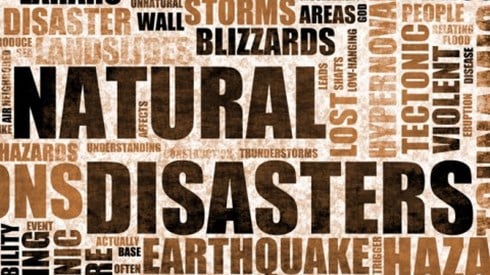COVID-19, Changing Risks Will Add Complexity to Reinsurance Renewals

November 25, 2020

January 1 reinsurance renewals and related negotiations will likely be lengthier and more complex than in prior years, according to a new report from Guy Carpenter.
In the report, Leading Up to January 2021 Reinsurance Renewals, the intermediary cites several factors that will contribute to the complexities around coming renewals. Among them, COVID-19 loss development continues to be slow and uncertain, Guy Carpenter says. "This will be a factor at January 1 for individual renewals and may potentially affect reinsurers' overall willingness to deploy capital," the report says.
Public loss estimates related to COVID-19 and tracked by Guy Carpenter average approximately $66 billion, the report says, while reported losses attributable to COVID-19 through third-quarter earnings announcements thus far are slightly over $25 billion.
The report notes that even before the pandemic, the industry was already facing a variety of challenges. "The widespread impact of a global lockdown added to this challenging market and created the potential for even greater volatility," the report says. "For an industry founded on the principles of diversification, we are now grappling with the implications of the first globally systemic insurance loss."
During the spring, more than one attempt to estimate the potential for pandemic-related claims put the loss at more than $100 billion, Guy Carpenter says. On top of the potential loss, volatility in the financial markets during the pandemic's early months hit the asset side of reinsurers' balance sheets, "followed by a lockup of the retrocessional market and widespread trapping of alternative capital."
Those factors made midyear renewals "the epicenter of market uncertainty," Guy Carpenter says, with those renewals marked by price increases and tighter capacity. But, "[d]espite this environment, all covers were placed and sufficient capacity was available," the report says.
Looking forward to January 1 renewals, some areas of uncertainty are diminishing, according to Guy Carpenter, while primary rates are increasing and new capital is entering the market. Meanwhile, the need for primary insurers to generate underwriting returns in a low interest rate environment has tightened capacity in certain classes of business and led to across-the-board rate increases, the report says.
Underscoring that trend, the report notes that the Marsh Global Insurance Market Index has shown price increases for 12 quarters in a row across all lines of business, adding that underlying insurance profitability is necessary for a sustainable insurance and reinsurance market.
Since spring, assets have recovered, Guy Carpenter says, while many market observers are revising their initial COVID-19 loss estimate downward, particularly in the area of property business interruption. While third-quarter earnings announcements thus far show reported COVID-19 losses of just over $25 million—much of that incurred but not reported—"there are many steps still to complete before ultimate outcomes are better understood," Guy Carpenter says.
While January 1 reinsurance renewals are likely to be complex, "the market is signaling that it is ready to respond," the report says. While at midyear dedicated reinsurance capital as estimated by Guy Carpenter and A.M. Best was down more than 2 percent, $35 billion of capital has been raised by insurance and reinsurance companies in an ongoing effort to bring additional capital into the sector.
In addition, Guy Carpenter says it expects the alternative capital market to evolve and adapt broadly as capital seeks new ways to access risk. "With specific regard to the retrocessional market, there is increasing activity and interest both from new capital and from existing rated balance sheets looking to deploy new capacity into the market," the report says.
While long-tail lines have been a focus of attention as increased loss frequency and severity squeeze companies' margins as social inflation drives loss-cost trends higher, industry response is to drive significant increases in insurance rates in distress areas and show increased discipline in selecting risks and deploying capital, Guy Carpenter says.
"In current market conditions, reinsurance is an effective tool for managing volatility and creating a capital buffer in uncertain times," the Guy Carpenter report says. "As a result, we continue to see strong interest in innovative structures and in the legacy transaction and run-off market."
Beyond COVID-19, the nature of risk is transforming, according to the report, with the insurance and reinsurance sector navigating "one of the most significant periods of change in recent times.
"The insurability of new risks is going to be one of the key defining issues of the next decade for the sector," Guy Carpenter says. "Rapid technological changes, digitalization in particular, have already transformed the characteristics of risks assumed by insurers and reinsurers."
The report notes the rise in the value of intangible assets, with roughly 84 percent of the S&P 500's market capitalization now composed of such assets as intellectual property, trade secrets, brands, or data. "The shift toward intangible assets challenges insurers but also presents opportunities," the report says.
In addition, the global catastrophe losses over the past 3 years have demonstrated to insurers—as well as governments—the need to prepare for a more diverse and expensive array of man-made and natural catastrophes. "New approaches to risk assessment and transfer and application of mitigation strategies are essential," the Guy Carpenter report says.
"The nature of risk is changing, and this change is being driven in part by accelerating and intensifying technological, demographic, environmental, and legal trends," the report says. "Recent losses and a challenging reinsurance market show that not only is the nature of risk changing but how risk is managed and shared is also changing."
November 25, 2020



